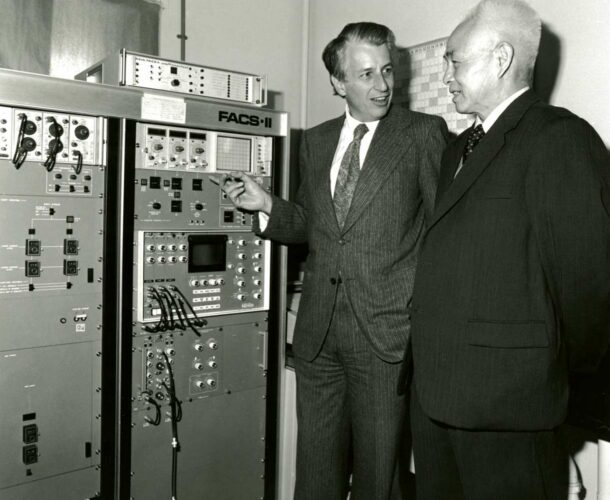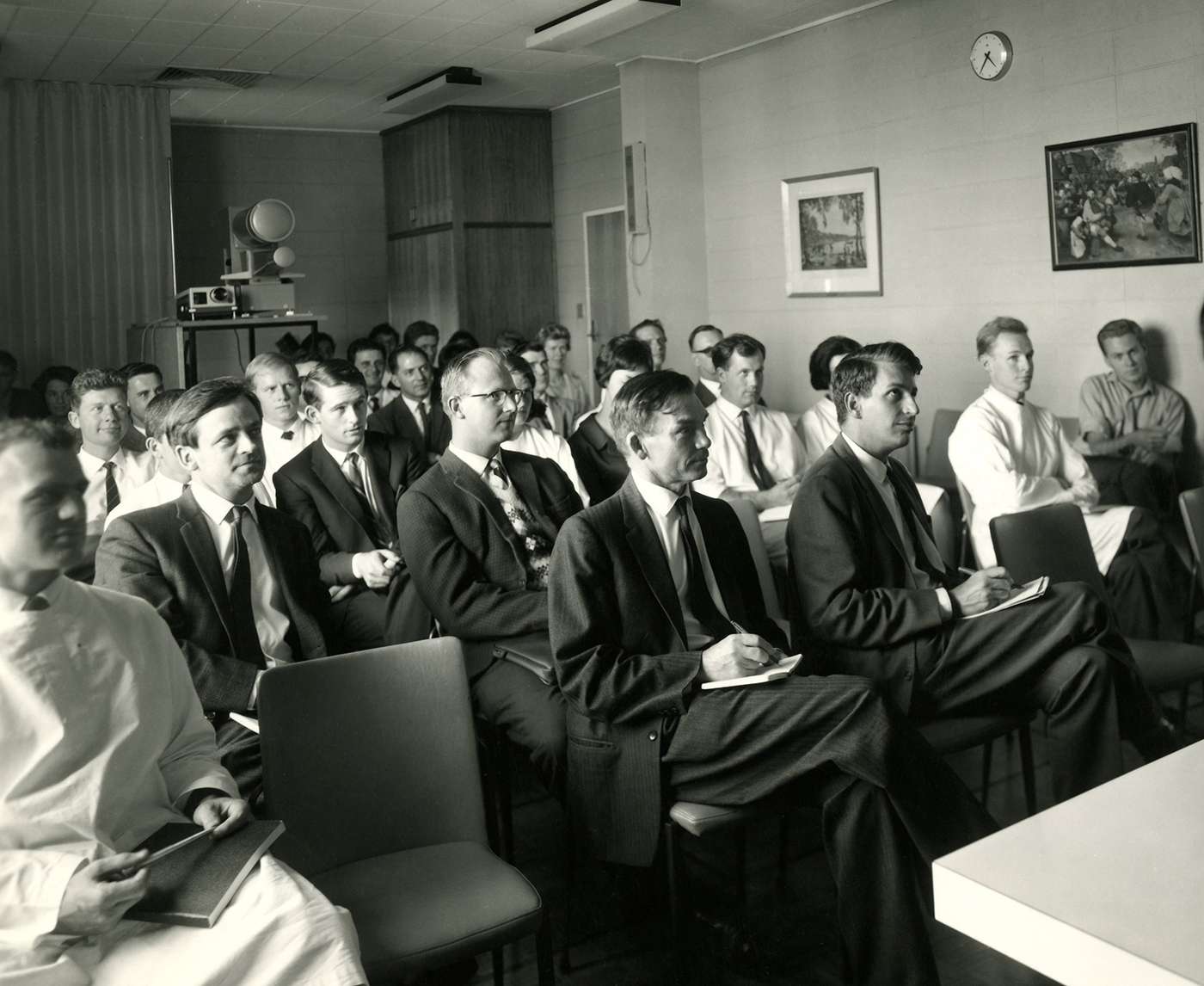Flow cytometry is a technology used to identify, count and separate cells. The acronym FACS (fluorescence activated cell sorter) is widely used, often interchangeably with flow cytometry.
The idea of introducing FACS to the Walter and Eliza Hall Institute occurred when institute scientists visited Stanford University and the Herzenberg laboratory. The late Professor Len Herzenberg was considered the father of flow cytometry and was responsible for developing the technique. At the time FACS was a novel technique, now it is a key technology in biological research.
First FACS in the southern hemisphere
With endorsement from the institute’s director Sir Gustav Nossal, and head of Biochemistry and Biophysics Unit Dr Ken Shortman, a FACS II is acquired and becomes the first flow cytometer to operate in the southern hemisphere.
In line with the dynamic nature of the institute’s scientific research, use of the technology quickly moves beyond the instrument’s capability. Dr Frank Battye’s appointment to run the FACS laboratory aids our ability to implement in-house modifications.
From the outset the Nossal and Shortman laboratories use the new technology to advance their research, making significant discoveries, particularly in thymus T-cell mapping.




